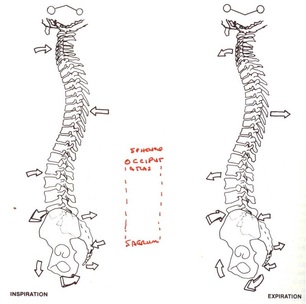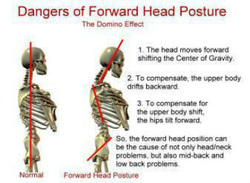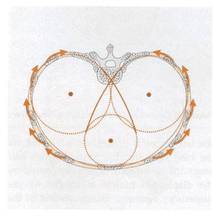
How does this all tie in to what we have previously discussed in our blogs? Simply the body's posture determines how much oxygen we take in to satisfy the body's needs.
The body has five diaphragms that need to work congruently in order function at 100%. Sometimes our day to day fatigue comes from not bringing in enough oxygen to satisfy what the body uses. If at times during the day you feel tired, could it be that you are not receiving enough oxygen. When we sit for long periods of time, does our breathing become shallower? Why would this be? What are these five diaphragms?
In Muscle Release Therapy, MRTh® the NOD(C) or network of diaphragms is one of the first elements taught. The reason being is that this network needs to be operational for the body to fully respond not only to therapy but to movement itself. The first diaphragm we all think of is the mid abdominal and this is the largest one. A trivia fact on this muscle is that it is the only one in the body that truly inserts on itself. It attaches to the ribs, the upper lumbar vertebrae and the lungs. Without getting into great detail this muscle's attachment to the lumbar (low back) spine will affect the hip flexor and low back flexor muscles if not functioning properly, often the cause of that catch in the low back when we take a deep breath.
The other four diaphragms are all part of the NOD(C) phenomena mentioned previously. The Fascia system starts in the skull and ends in the feet. There are two muscles on the back of the head that start the NOD(C) process by initiating movement of this Fascia in the skull. Those also happen to be the two muscles that are directly tied into the mandible joints and often are the site of migraine headaches. As these two contract or shorten they pull directly on the Fascia, also known as the Dura Mater, and this begins the cycle of inhalation. As this process completes its cycle, the muscle elongate therefore taking tension off of the Fascia; it is this cycle which initiates the movement throughout the body.

Any head trauma can begin the cycle of inhibited breathing! That is why it is important for the individual to disclose to the therapist any form of trauma. What constitutes head and neck trauma? This is a question that often goes unanswered by many of the clients but somehow comes up in subsequent sessions. The definition is broad but goes something like this: "any abrupt movement that causes the tension on the skull to change." What exactly does that mean? Do you have a tendency to sneeze or cough harshly? Have you ever bumped your head on a cupboard or in a fall? Have you ever been in a motor vehicle incident or did you ever fall off of your bike during your youth? As you can see there are many times during your lifetime that head trauma may occur. The body's breathing system is quite complex and will accommodate any and all incidents to continue to breath, because it is necessary for life and movement.
Did you ever wonder why you have trouble doing deep breathing or meditation? Probably because your breathing apparatus is limited and we often overlook the inadequacy of how we breathe. One of the first items taught in Muscle Release Therapy, MRTh® and Fundamental Movement Therapy(SM) is making sure the individual is able to properly breathe. In the Muscle Release Therapy, MRTh® the practitioner observes movement of the rib cage and will treat that area first if proper breathing methods are dysfunctional. In Fundamental Movement Therapy(SM) the instructor talks and teaches proper breathing mechanics while instructor shows the student what imprinting is.
To see if you are breathing correctly try this little exercise:
- Sit in a comfortable chair where you back is relaxed and your feet are in full contact with the floor or stool.
- First check your feet, do you feel pressure along the inside arch of your foot or does your foot have a tendency to want to roll out. One other item here, is it hard for you to keep both feet in contact with the floor?
- Let your shoulders relax, if you feel a strain here or your have a hard time keeping your shoulders back with forcing your chest forward there is an indication of neck trauma.
- As you take your first deep breath be aware of where you are moving.
- do you feel the bottoms of your feet being slightly raised up
- do you feel the pelvic floor lifting
- do you feel the bottom of your rib cage opening and the upper part raising
- do you feel your neck decompressing
- do you feel the base of your skull depressing
- if not you might need to call one of our therapist to have this balanced.
Practice you're breathing and as we continue the posture journey, remember there is - a Reason to HOPE!
Dennis

 RSS Feed
RSS Feed
